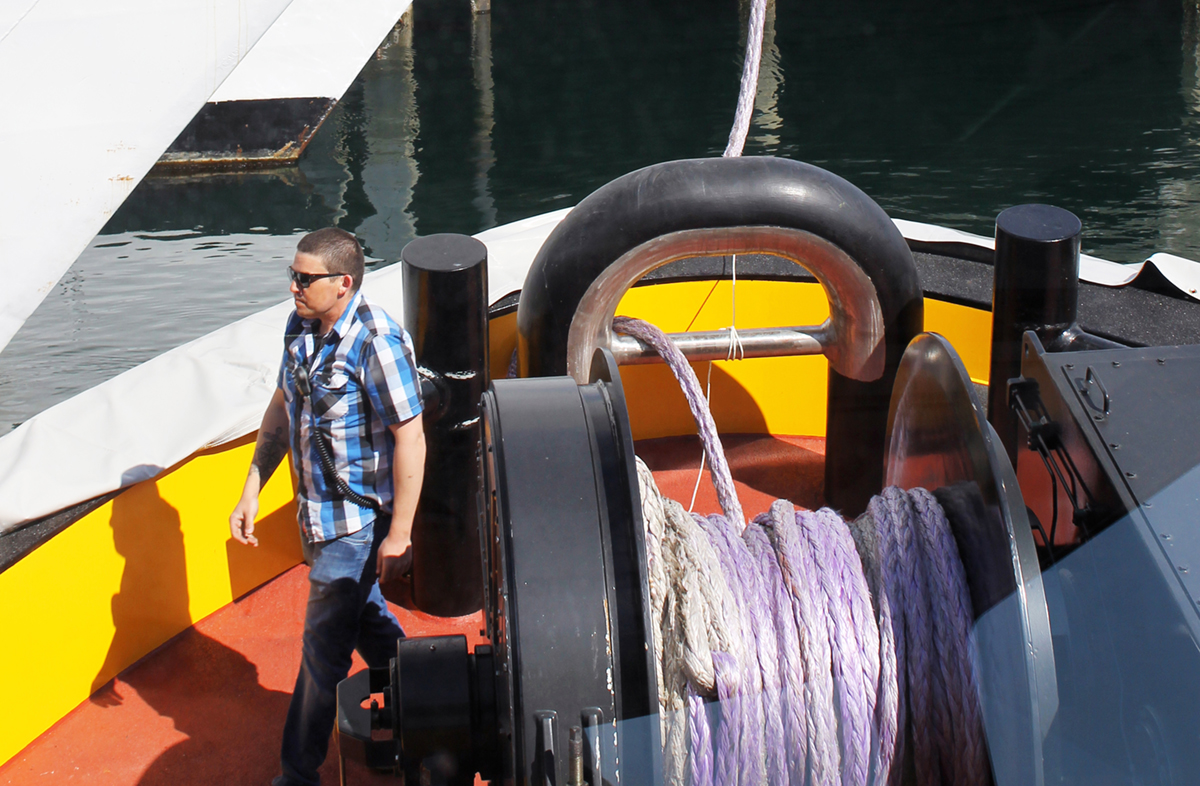Western Towboat recently took delivery of a new tugboat from its in-house construction facility on the north side of Seattle’s Lake Washington Ship Canal. The 79-foot Mariner is the 19th tug built by Western Towboat, and the first in more than a decade to be earmarked for harbor service.
The company, founded by Robert Shrewsbury Sr. in 1948, began with one tug in Seattle’s Ballard neighborhood. The company began building its own tugboats in 1982, and built the first long-haul tug on the West Coast with ASD drives – the 72-foot Westrac, in 1987.
The business has since grown to a fleet of 22 tugs and 7 barges, and remains a family business, operated by Bob Jr. and his sons Russell, Ross, and daughter Kristin.
Western offers ocean towing, harbor towing and ship assist, container and transportation services, with a year-round twice-weekly freight service to Alaska making up about 70 percent of the company’s business
Most of the company’s newest tugs are built to tow rail car barges back and forth to Whittier, Alaska for Alaska Marine Lines. The Shrewsburys have been building ocean-going, ASD tugboats to move these barges, but this year that changed with the delivery of the 79-foot by 31-foot Mariner, built exclusively as a ship-assist harbor tug to operate in Seattle’s Elliott Bay and the greater Puget Sound.
Western has a fully-staffed shipyard experienced in both steel and aluminum fabrication, and the shipyard employees are kept busy turning out a new boat on a fairly regular schedule. To date the company’s fleet has been powered exclusively by Caterpillar engines, which has allowed for a full complement of spares and the ability to change out an engine in a matter of two or three days to keep the boats operating.
The keel was laid for the new boat before the deadline for Tier 4 standards, so the Mariner is motivated by a pair of Tier 3 Caterpillar 3512C engines, each providing 1,970 hp. Centa carbon fiber shafts transmit the power to a pair of Schottel SRP1215 azimuthing drives turning three-bladed Nautican 80-inch propellers in Nautican nozzles.
The result of this modern technology is a respectable 55-tons of bollard pull and a cruising speed of 13 knots.
The new boat is a Jensen Maritime design based on the 1987-built Westrac. “It’s wider than the Westrac, and deeper, too,” says Russ Shrewsbury. “And of course it’s longer and has larger engines.” There isn’t really much of the original Westrac design left in the new boat, he admits.
The company’s last nine tugs are all built for towing, with the attendant stern-mounted towing winch and wire for hauling heavily laden barges north in all weather conditions, and although built as a ship assist tug the Mariner is also fitted out for towing.
Along with boats, the welders and machinists at Western Towboat are also adept and designing and building deck machinery. Mariner has been fitted with a winch designed and built in-house to meet the particular needs of the company’s Alaska or Hawaii-bound clients.
The Western Towboat-branded single drum winch carries 1,800 feet of 1.75-inch galvanized tow wire and 200 feet of 2.5-inch plasma line.
The new boat is also fitted with company-built hydraulic stainless tow pins, and an auxiliary Pullmaster M50 stern winch offers 25 tons of line pull and carries 150 feet of 2.5-inch plasma line.
Mariner also required a sturdy hawser winch for ship handling purposes, so Western reached out to DMT Marine Equipment, a division of the Dutch shipyard group Damen, for a custom-built, hydraulic ship-handling winch.
Designed for both towing and mooring operations, the DMT 011H single drum ship handling winch offers 40 tons of line pull, and features a load pin for towing force measurement. The drum uses a hydraulically operated friction clutch designed to slip on its lining in case of dynamic overloads.
Two John Deere Tier 3 auxiliary generators each provide 75 kW of electrical power. Fendering is supplied by Shibata and Schuyler Rubber and a Cascade Machinery firefighting pump supplies 250 gallons per minute through a 2.5-inch deck hose. A Kidde CO2 system provides onboard fire suppression.
The well-appointed wheelhouse boasts a full complement of Furuno equipment including two radar sets, a GPS and a bridge navigational watch alarm system, as well as an AIS unit and e-navigation software. A Richie compass and Simrad autopilot round out the bridge electronics. Large windows offer 360 degrees of visibility, and extend from knee-height all the way to the ceiling, offering an unobstructed view of deck operations and a good view to the deck and crew of the ships being assisted.
Like most of the company’s boats, Mariner’s steel hull and crew spaces are topped with a weight-saving aluminum wheelhouse. Deck fittings and handrails on Western tugs are stainless steel, which offers a maintenance advantage for the boats that regularly travel to Alaska during difficult weather, although on Mariner they’re also painted black.
“I like them painted,” Russ says. Because Mariner will be performing harbor work in Seattle, the weather will be less of a factor for maintenance.
Russ Shrewsbury notes that finding a drydock to launch the latest boat was a challenge. “There aren’t as many drydocks around as there used to be,” he says, “and those that are around are booked pretty far in advance.” The brothers are considering building their own drydock, not only to ease the launch of new vessels but also to make maintenance more efficient.

